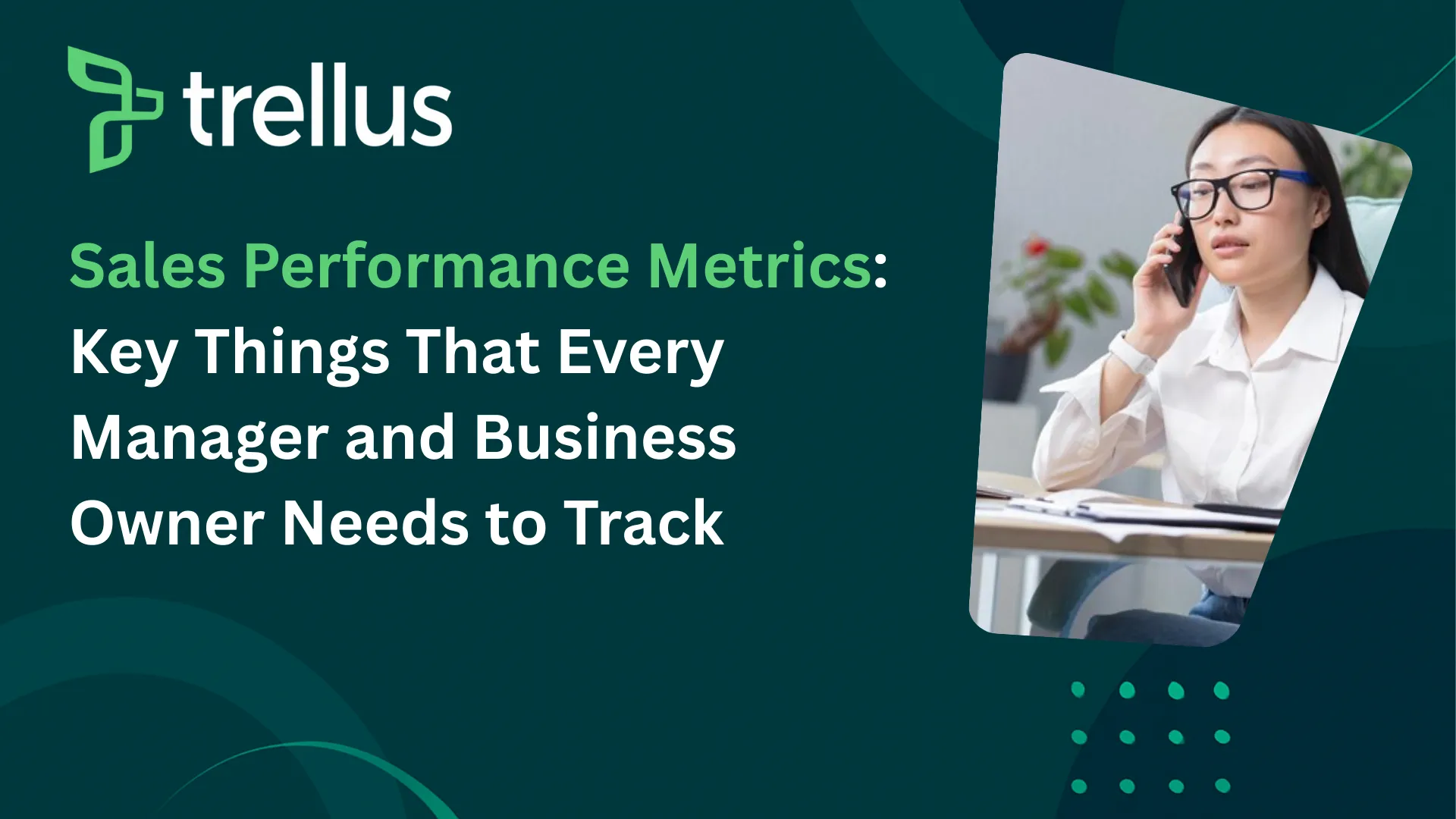
Our Top Picks


Data doesn’t lie—companies that know how to track the right numbers are 23 times better at turning prospects into customers.
But here’s the catch: not all metrics are created equal.
Some look flashy on reports but don’t tell you anything useful, while others reveal exactly where your sales team is crushing it—or falling short.
Also on that front, sales-oriented businesses are always engaged in tracking different metrics. There’s a possibility that your competitor might be keeping tabs on an entirely different set of outbound call metrics, while you are working on something else in terms of KPI setting and tracking.
This could be a differentiator in terms of performance and business scalability.
Regardless of the approach, outbound call metrics are the backbone of any successful sales operation.
They tell you whether your team is just dialing for the sake of hitting quotas or actually having meaningful conversations that drive revenue.
Similarly, on the flip side, inbound call metrics show you how well you’re handling incoming interest, whether leads are getting stuck in limbo or smoothly moving through your pipeline.
The key is knowing which numbers deserve your attention. Because if you’re not measuring the right things, you’re basically guessing.
Why Outbound Call Metrics Matter More Than You Think

Outbound call metrics aren’t just about counting dials.
A long time ago, when the call centre trend was at its highest, many such businesses were reportedly just concerned with handing a long sheet of prospect numbers to SDRs and then having everyone on the grind to dial max numbers.
Over time, this trend and approach have changed, especially ever since the way technology has offered multiple automated solutions, ai call coaching software with live listen tools, and all sorts of digitized solutions.
Nowadays, outbound call metrics are all about understanding what happens when your team picks up the phone. The same goes for inbound call metrics.
Bottom line: Are people in your team reaching real people and establishing a human connection? Are those conversations leading somewhere? Or are they just burning through leads without making progress?
The same goes for inbound calls. If you’re not tracking how those calls are handled, you could be missing huge opportunities.
Maybe your team is great at answering or reaching out quickly, but terrible at converting those calls into sales. Or maybe they’re spending too much time on low-value calls while high-potential leads slip through the cracks.
Here’s the truth: if you’re not tracking both outbound and inbound call metrics, you’re flying blind.
The Outbound Call Metrics That Actually Drive Sales

Here are a bunch of outbound call metrics and PIs that we wanted to share with you.
Of course, depending on your business requirements and the type of audience it usually caters to, feel free to make any adjustments that you deem accurate.
1. Call-to-Connect Rate – The Make-or-Break First Step
First off, we’ve got the call to connect rate.
This metric cuts through the noise and shows you one simple thing: are your reps actually talking to human beings? It’s easy to celebrate a high number of dials, but if only 5% of those calls connect with a real person, you’re wasting time and burning out your team.
A healthy connect rate (10-20%) means your leads are fresh, your call times are strategic, and your caller ID isn’t scaring people off. But when this number dips, here’s what’s usually happening:
- Dead leads – Your list is clogged with disconnected numbers, wrong contacts, or people who’ve asked not to be called. A quarterly scrub of your database can work wonders.
- Bad timing – Calling at 9 AM might seem logical, but if your audience is busy then, you’ll get voicemails. Test different times—early mornings, lunch breaks, even early evenings—to see when live answers spike.
- Suspicious caller ID – If your number shows up as "Unknown" or from a different state, people ignore it. Local presence dialing (showing a nearby area code) can boost answer rates by 30% or more.
What could be a possible fix? Stop assuming your team just needs to "dial harder." Look at the data. If connect rates are low, the problem isn’t effort—it’s strategy.
2. Average Call Duration – The Hidden Clue to Sales Pitches That Work (or Flop)
Call length isn’t just a number—it’s a story.
Too short (under a minute)? Your reps are likely getting shut down fast. Too long (over 20 minutes)? They might be rambling or stuck in unproductive tangents.
Here’s how to decode it:
- Cold calls under 60 seconds – This usually means one of three things:
- The opener is weak (e.g., "Hi, do you have a minute?" gets instant "no’s").
- Reps jump into a pitch before the prospect cares.
- They’re not qualifying—just spraying and praying.
- Demos or sales calls over 30 minutes – While some deals need deep discussion, excessively long calls often mean:
- The rep is talking too much, not guiding the conversation.
- The prospect is interested but not urgent (a sign they might not be a real buyer).
- There’s no clear structure to the call, so it drags.
The best reps adapt. For cold calls, they aim for 2-5 minutes—enough to spark interest and book a next step. For demos, they keep it tight (15-20 minutes) with clear next actions.
Pro tip: Don’t just track averages. Look at your top closers. Do they have shorter or longer calls? If your best rep averages 12-minute calls and your struggler averages 8, maybe the struggler needs to slow down and listen more.
3. Conversion Rate – The Only Metric That Reveals If Your Team Can Close
You could have perfect connect rates and ideal call lengths, but if 0% of those calls turn into demos, sales, or follow-ups, something’s broken.
A strong conversion rate (20-30%) means your team is:
- Asking the right questions to uncover needs.
- Pitching with relevance, not generic scripts.
- Handling objections instead of folding at the first "no."
But when this number tanks, here’s why:
- Pitching too soon – If reps lead with features before the prospect feels a problem, conversions plummet.
- No urgency – Calls end with "I’ll think about it" because reps don’t create a reason to act now.
- Weak closes – Reps assume "Sounds good?" is enough instead of direct asks like, "Can we schedule the next step?"
The fix? Record and review calls. Look for patterns. Do conversions drop when reps skip discovery? Do they rise when they use trial closes? Data doesn’t lie.
4. Follow-Up Rate – The Silent Killer of Sales Teams
Here’s a stat that hurts: 44% of reps give up after one follow-up. But 80% of sales require at least five touches. Translation? Most teams quit right before the prospect is ready to buy.
Tracking follow-up rate shows you who’s actually nurturing leads versus who’s just chasing shiny new ones.
Why this metric matters:
- One-and-done calls – If reps rarely follow up, they’re relying on luck, not process.
- CRM ghosts – Leads marked "not interested" after one call might just need a different angle.
- Time kills deals – The longer a lead sits untouched, the colder they get.
How to fix it:
- Automate reminders – Use your CRM to flag stale leads and prompt reps to re-engage.
- Teach persistence – Share stories of deals that closed on the 6th touch, not the 1st.
- Track touches – Make follow-ups a visible metric, not an invisible task.
5. Talk-to-Listen Ratio – The Secret of Top Performers
Bad sales calls sound like a monologue. Great ones sound like a conversation. The talk-to-listen ratio (ideal: 40% rep, 60% prospect) reveals who’s actually engaging versus who’s just reciting a script.
Why does this ratio predict success?
- Reps who talk too much (70%+) are usually:
- Nervous and filling silence.
- Pitching instead of probing.
- Missing buying signals because they’re not listening.
- Reps who listen more (50%+ prospect talk time):
- Uncover real pain points.
- Build trust by making it about the buyer.
- Adjust their pitch based on what they hear.
How to coach it:
- Review call recordings – Count how often the rep interrupts.
- Practice silence – Role-play with a 3-second pause after each prospect's response.
- Score calls – Rate reps on how well they balance speaking and listening.
Inbound Call Metrics – The Other Side of the Equation
Moving on, aside from outbound call metrics, inbound call metrics are equally important.
The only difference in this case is that the dynamics have shifted to those sales call businesses that also cater to incoming customer support or general inquiry calls. In this context, focusing on outbound metrics won’t suffice because of the servicing and reputation factor in both cases.
Let’s see what you need to keep tabs on.
Call Volume - The Pulse of Your Business
First things first; this isn’t about the actual call volume, but more of a metaphorical term that focuses on the business’s impact on the audience from different angles.
Tracking inbound call volume isn't just about counting rings - it's about understanding the heartbeat of your customer base.
When you analyze call patterns over weeks and months, you'll start seeing rhythms that can transform how you operate. Those mid-morning spikes on Tuesdays? They're not random. The lull right after lunch? Predictable. The seasonal surge in December? You can prepare for it.
The real power comes when you match call volume data with staffing. Too many businesses make the mistake of static scheduling, while their call traffic resembles a rollercoaster. The solution lies in dynamic staffing - adjusting team schedules to match proven demand patterns. Modern workforce management tools can predict these ebbs and flows with surprising accuracy, allowing you to have just enough staff at just the right times.
But volume tracking goes deeper than staffing. It reveals which marketing campaigns actually drive phone responses versus which ones just look good on paper.
That Facebook ad or a recent podcast on LinkedIn might be getting clicks, but if it's not generating calls, is it really working for your business? Call volume patterns can answer that question definitively.
First Call Resolution - The Silent Revenue Protector

First call resolution (FCR) might be the most underrated metric in customer service. When a customer's issue gets solved in one interaction, magic happens.
Satisfaction scores jump. Operational costs drop. Customer loyalty strengthens. But when calls get passed around or require multiple follow-ups, frustration builds like steam in a pressure cooker.
In a broader sense of things, high FCR rates (industry benchmarks suggest 70-75% is good) indicate a team that's empowered, knowledgeable, and efficient. Low rates reveal cracks in your foundation - perhaps inadequate training, restrictive policies, or siloed information systems. The best organizations treat FCR as a cultural priority, not just a number to hit.
The path to better FCR starts with root cause analysis. Why are calls coming back? Is it product confusion that better onboarding could prevent?
Are reps missing critical knowledge that additional training could provide? Or are systems failing to give reps the tools they need?
Each repeat call tells a story - the key is listening to what they're collectively saying.
Customer Satisfaction - The Ultimate Truth-Teller
Customer satisfaction (CSAT) scores cut through assumptions and reveal the unvarnished truth about your service quality.
While other metrics tell you what's happening, CSAT tells you how customers feel about what's happening. That emotional component makes it uniquely valuable.
But CSAT isn't just about the number itself - it's about the trends and patterns within that number. Are satisfaction scores dropping on long hold days?
That points to staffing issues. Do they dip with certain products? That suggests knowledge gaps. Do they vary wildly between reps? That indicates inconsistent service quality.
The most effective CSAT programs go beyond the rating to capture verbatim feedback. Those open-ended comments are gold mines of insight, often revealing issues you didn't know to ask about. They also help explain the "why" behind the scores, allowing for targeted improvements rather than guesswork.
To make CSAT truly actionable, close the loop with both customers and staff. When customers take time to provide feedback, positive or negative, acknowledge it.
Similarly, you’ll notice as a business manager that when patterns emerge in the data, you need to share them with the team in constructive ways. The goal isn't to assign blame, but to collaboratively improve the experience.
Connecting the Dots Between Metrics
The real power emerges when you see how these metrics interact.
For instance, high call volume with low FCR creates a vicious cycle of repeat calls that overwhelm staff.
Strong CSAT scores despite volume spikes suggest resilient processes. Dropping satisfaction during periods of good FCR might indicate rushed interactions that solve problems but leave customers feeling unheard.
The most successful operations don't view these metrics in isolation. They understand that call volume dictates capacity needs, FCR impacts efficiency, and CSAT reflects the human element of service. Together, they form a complete picture of performance that's greater than the sum of its parts.
The Bottom Line - It’s An Ongoing Process!
Outbound call metrics tell you whether your outreach is working.
On the other hand, Inbound call metrics reveal how well you’re capitalizing on incoming opportunities. Together, they give you a complete picture of your sales engine—where it’s humming and where it’s sputtering.
The bottom line is that it’s a constantly evolving landscape where you need to keep an eye out for everything that’s going on at multiple frontlines.







